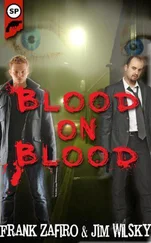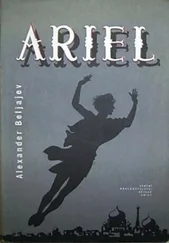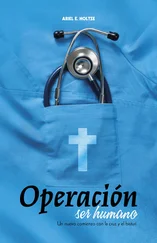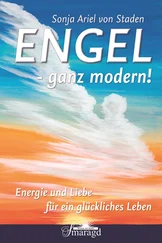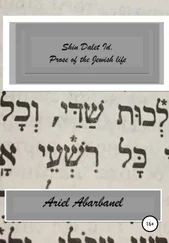Ariel Toaff - Blood Passover
Здесь есть возможность читать онлайн «Ariel Toaff - Blood Passover» весь текст электронной книги совершенно бесплатно (целиком полную версию без сокращений). В некоторых случаях можно слушать аудио, скачать через торрент в формате fb2 и присутствует краткое содержание. Жанр: Религиоведение, на английском языке. Описание произведения, (предисловие) а так же отзывы посетителей доступны на портале библиотеки ЛибКат.
- Название:Blood Passover
- Автор:
- Жанр:
- Год:неизвестен
- ISBN:нет данных
- Рейтинг книги:3 / 5. Голосов: 1
-
Избранное:Добавить в избранное
- Отзывы:
-
Ваша оценка:
- 60
- 1
- 2
- 3
- 4
- 5
Blood Passover: краткое содержание, описание и аннотация
Предлагаем к чтению аннотацию, описание, краткое содержание или предисловие (зависит от того, что написал сам автор книги «Blood Passover»). Если вы не нашли необходимую информацию о книге — напишите в комментариях, мы постараемся отыскать её.
Blood Passover — читать онлайн бесплатно полную книгу (весь текст) целиком
Ниже представлен текст книги, разбитый по страницам. Система сохранения места последней прочитанной страницы, позволяет с удобством читать онлайн бесплатно книгу «Blood Passover», без необходимости каждый раз заново искать на чём Вы остановились. Поставьте закладку, и сможете в любой момент перейти на страницу, на которой закончили чтение.
Интервал:
Закладка:
p. 29]
so as to live and survive comfortably, but they also, when need arose, proved themselves enterprising in financial matters, courageous and even bold in their commercial undertakings, nonchalant and often arrogant and impudent in their relations with the government, only obeying the law when it was strictly necessary or too dangerous to do otherwise. Victory was now theirs, and it was because of these same bankers and merchants that many of them had been able to accumulate huge sums of capital in a relatively short lapse of time, such as to bear no comparison with the fortunes possessed by Christian mercantile families and patricians who were both more distinguished and of higher rank.
The chronology is relatively precise. In 1455, all Italian Jews active in the money trade were expelled from Padua and compelled to shut down their banks, while the "Teutonic" Jews, divided from, and now entirely separate from, the Italian Jews, gained the upper hand in the local money market [Padua], the most important in the terra firma of the Veneto region, as early as ten years before. At Verona, all lending banks owned by Italian Jews had already been closed in 1447, while, in 1445, the permits of the Jewish bankers of Vicenza were not renewed [59] The processes and events which, in the mid-Fifteenth Century, led to the forced transfer of money lending in this zone from Italian Jews to German Jews have been studied in many precise research papers. See, among others, Braunstein, Le prêt sur gage a Padoue , cit., pp. 651- 669; G.M. Varanini, Appunti per la storia del prestito de dell'insediamento ebraico a Verona nel Quattrocento , in Cozzi, Gli ebrei e Venezia , cit., pp. 615-628; G.M. Varanini, Il commune di Verona, Venezia e gli ebrei nel Quattrocento. Problemi e linee di ricerca , in Id., Communi cittadini e stato regionale. Ricerche sulla Terraferma veneta nel Quattrocento , Verona, 1992, pp. 279-293; M. Nardello, Il prestito ad sua a Vinceza e la vicenda delgi ebrei nei secoli XIV e XIV , in "Odeo Olimpico", XIII-XIV (1977-1978), pp. 123-125; Carpi, L’individuo e la collettività , cit., pp. 34, 130-132; Scuro, Alcune notizie sulla presenza ebraica a Vicenza, cit., pp. 103-121.
. With the Italian Jewish banks shut down in all the principal centers of the Veneto region, a few district lending banks, few in number but of great economic potential, particularly because of the higher interest rates charged by them in comparison to the rates formerly charged by banks controlled Italian Jews, remained open to serve the needs of the clientele in the cities and in the countryside [60] See Braunstein's intelligent contributions in this regard, Le prêt sur gage à Padoue , cit., pp. 662-663.
. These were the banks of Soave and Villafranca in the district of Verona, Mestre for Venice, and Este, Composampiero and, above all, Piove di Sacco in the Padua district [61] It is significant that, on 12 January 1461, the Consiglio del Commune di Padova lamented the fact that, with the formal coverage of the banks of Piove di Sacco, Monselice and Este, the Jewish money lenders continued to operate illegally on the market at Padua, charging interest at rates over 40% ("contra Statuta nonnulli Iudei per quamdam viam indirectam fenerari incipient in civitate Padue hoc modo, videlicit quod in Padua accipiunt pignora et mutuant pecunias et postea fieri faciunt bulletinem per Iudeos fenerantes in Montessellice vel Plebe aut in Este, fingendo quod Iudeus de Plebe aut de Montesselice vel de Este sit ille qui mutuet tales pecunias, cum quibus Iudeis de ei habitantes Padue ses intelligunt cum lucro quadraginta pro centenario ut ultra"). [“notwithstanding the laws stipulating that no Jew may lend at usury in the city of Padua, either directly or indirectly, particularly, that they accept collateral in Padua and lend money at usury and then fabricate vouchers from Jewish money lenders at Piove or Montesselice or Este, pretending that it is those Jews who are actually lending the money in Padua, thus making a profit of forty percent or more”]. The rulers of Padua protested before the Doge of Venice, objecting to the fact that Jewish money lenders had been granted the right to operate in this manner thanks to letters patent issued in their favor by the authorities of Venice ("quod sua Excelsitudo dignetur revocare dictas litteras concessas prefatis Iudeis, quia, stantibus dictis litteris, dicti Iudei per hanc viam mutuabunt percunias sub uxuris; nam si mutuarent publice et palam sicut facere soliti errant, non haberent nisi .XV pr centenario" [“may his Excellency deign to revoke the said letters granted to the above mentioned Jews, because, being in the possession of such letters, these Jews are enabled to lend money at usury; while if they did so publicly and openly as they usually do, they would not even earn 15 percent”] ASP, Consiglio del Comune, Atti, 7., cc. Cv-6r).
.
The forced and almost simultaneous dismantling of the Jewish banks of Padua, Verona and Vicenza led, as an immediate consequence, to the almost total extinction of the Hebraic community of Roman origin, which was compelled, for the most part, to flow into the centers on the nearer side of the Po; on the other hand, however, it allowed other money lenders, from Treviso and the territories of Friulia, who took over the assets and management of the few remaining lending banks, to make extraordinary fortunes. As we have seen, these banks benefited from an extremely broad catchment area and could rely on a numerous and heterogenous clientele. Their economic success was therefore guaranteed and proved to be exceptional in scope. The lucky few bankers remaining on the piazza were almost all Ashkenazi, the same Jews who had hastened or more or less directly procured the financial ruin of the Italian Jews. The
p. 30]
most prominent among them was, in the end, Salomone di Marcuccio, owner of the Banco di Piove di Sacco and, after 1464, David Mavrogno da Candia’s official business associate, with a more or less official residence at Venice [62] Salomone, in 1441, when he was still called "da Cividale " and not yet "da Piove di Sacco", had set up banks at Verona and Soave, transferring them to Padua in 1442 (cfr. A. Castaldini, Mondi paralleli. Ebrei e Cristiani nell'Italia padana dal tardo Medioevo all'Età moderna, Florence, 2004, p. 59).
.
Rich and influential, Salomone, although not a man of great culture, was not averse to sponsorship ventures, in which field he established himself with flare and good taste. At Piove, where the local community was practically one of his fiefdoms, in 1465, he became associated with the German printer Meshullam Cusi, whose presence at Padua is attested to in the same year. Cusi undertook the initial printing of one of the first Hebraic cunabulae, certainly one of the most important and monumental, at Piove, towards the end of 1473. This was a classic ritualistic code, Arba'a Turim , a work of the German rabbi Ya'akov b. Asher (1270 circa 1340), whose family originated from Cologne but had carried on its activities for the most part at Barcelona in Catalunya, and later at Toledo in Castille.
The four volumes, printed on Cusi’s presses with great care and heedless of cost, were completed in July 1475 and constituted one of the most splendid and elegant examples of Hebraic printing [63] This is attested to by numerous studies by D. Nissim. Among others, particular attention should be paid to D. Nissim, Nel quinto centenario delle prime stampe ebraiche (1475-1975) , in "Atti e Memorie dell'Academia Patavina di Scienze, Lettere ed Arte, LXXXVI (1975-1976), part III, pp. 43-52; Id., Spigolature di bibliografia ebraica , in A. Toaff, Studi sull'ebraismo italiano presentati ad Elio Toaff , Rome, 1984; pp: 129-155; Id., I primordi della stampa ebraica nell'Italia Settentrionale , cit. 52) The hypothesis, sustained by Nissim ( Famiglie Rapa e Rapaport nell'Italia settentrionale , sec. XV-XVI. Con un' appendice sull'origine della Miscellanea Rothschild , in A. Piattelli and M. Silvera, Minhat Yehuda . Saggi sull'ebraismo italiano in memoria di Yehuda Nello Pavoncello , Rome, 2001, pp. 190-192), is based on the studies of U. Bauer-Eberhardt ( Die Rotschild Miscellanea in Jerusalem: Hauptwerke des Leonardo Bellini , in "Pantheon", XLII, 1984, pp. 229-237), expressing the opinion that the miniatures in Miscellanea Rotschild, currently preserved at the Israel Museum of Jerusalem, were probably executed at Venice in Leonardo Bellini's workshop, and perhaps by the same master. But see L. Mortara Ottolenghi, The Rotschild Miscellany MS 180/51 of the Israel Musem in Jerusalem. Jewish Patrons and Christian Artists , in "Hebrew Studies", British Library Occasional Papers, 13, London, 1991, pp. 149-161. In contrast to Bauer-Eberhardt and Nissim, the illustrious Canadian scholar attributes the miniatures to the schools of two major Christian artists of Cremona, Bonifacio Bembo and Cristoforo de Predis (circa 1460-1480), identifying the client as the Jew Furlano da Cremona, i.e., the banker Mose di Consiglio Sacerdoti. According to Nissim, who believes that he has succeeded in identifying the client as Salomone di Marcuccio da Piove, a resident of Venice; the reason why the latter's name does not appear in the manuscript, where the name of the rabbi Moshè b. Jekutiel Coen Rapa, his protégé, does appear, could be explained by Salomone's sudden and mysterious death, occurring in 1475, when the code was not yet completed (written communication from D. Nissim dated 11 November 2004).
. Certain copies of great beauty were printed on parchment and intended for a highly sophisticated readership, particularly from the economic point of view, one of the most important of whom was to be Salomone di Piove. The printing costs linked to the supplies of machinery, type, materials and labor, were to fluctuate between seven hundred and one thousand ducats, a large sum which Cusi might not have had available, without the direct or indirect joint involvement of the Jewish banker di Piove.
Интервал:
Закладка:
Похожие книги на «Blood Passover»
Представляем Вашему вниманию похожие книги на «Blood Passover» списком для выбора. Мы отобрали схожую по названию и смыслу литературу в надежде предоставить читателям больше вариантов отыскать новые, интересные, ещё непрочитанные произведения.
Обсуждение, отзывы о книге «Blood Passover» и просто собственные мнения читателей. Оставьте ваши комментарии, напишите, что Вы думаете о произведении, его смысле или главных героях. Укажите что конкретно понравилось, а что нет, и почему Вы так считаете.


